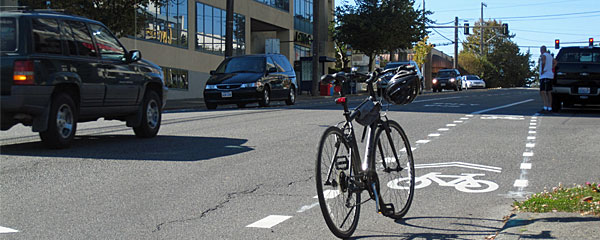I don’t generally have a lot of nanny-state moments, but this article about how Seattle’s bike helmet law is holding up efforts to launch the Puget Sound Bike Share program had a couple of discordant notes. Repeatedly, the article makes assertions like this:
We live in a helmet-wearing culture and the PSBS plans to own it. “We are proud to start the [bike share program] in Seattle and be a model for other cities,” Lindmark says.
That’s Ref Lindmark, who happens to be the transportation planner for King County Metro as well as president of the PSBS board. Note that his quote seems to have nothing to do with bike helmets, much less our “helmet-wearing culture.” Possibly because that’s not what we have. What we have is a county regulation stating that anyone riding a bicycle without a helmet can be subject to a $30 fine. So the fact that just about everyone in Seattle wears a helmet isn’t a cultural quirk so much as the result of a deliberate policy choice by our government.
Granted, laws reflect culture to a certain extent. But they also tend to be deliberate attempts to influence the culture — in this case, by making it slightly harder for people to use bicycles in exchange for making it slightly safer for them when they do.
It’s a perfectly sensible tradeoff, not unlike the seat belt laws we grew up with in every state except New Hampshire. The difference is that seat belts are generally built right into the cars, whereas bikes and helmets generally come separately. That raises the bar for people who don’t maintain their own equipment, as the article demonstrates.
Before I moved here, I didn’t even own a helmet. I spent most of my life in Nebraska and Iowa, which don’t have helmet laws, and became cynical as a kid after I managed to knock out my front teeth despite wearing one. Still, it wasn’t a tough adjustment: I went out, got a helmet, and now I barely think about it. So in a way, I’m exactly the sort of cyclist whom the law was intended to target.
But I tend to get the impression that Seattle likes the idea of biking more than actual bike-friendly policies. Its approach to bicycle paths, for instance, is mostly to paint little bicycle logos on the streets — as though cyclists need to be reminded which way the traffic is going. Some streets have actual separate lanes with dividing lines, but even these can disappear after a couple of blocks and lead you straight into a parked car. The city doesn’t seem to put much stock in the concept of widened sidewalks or actual bike trials, which would be a lot safer for cyclists than any helmet law. That, though, would require a comprehensive, reasoned approach to transportation planning, which does not seem to be part of the culture here.
